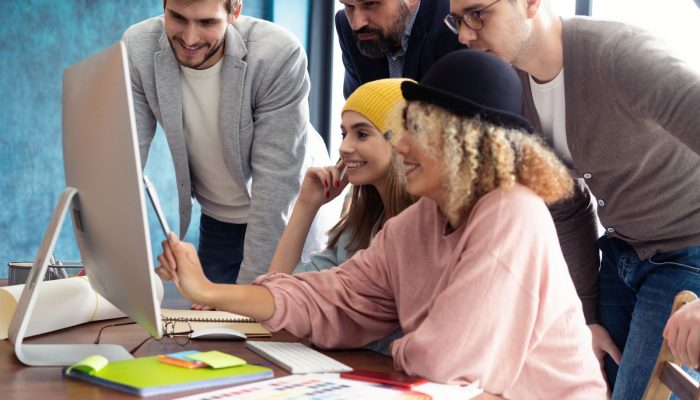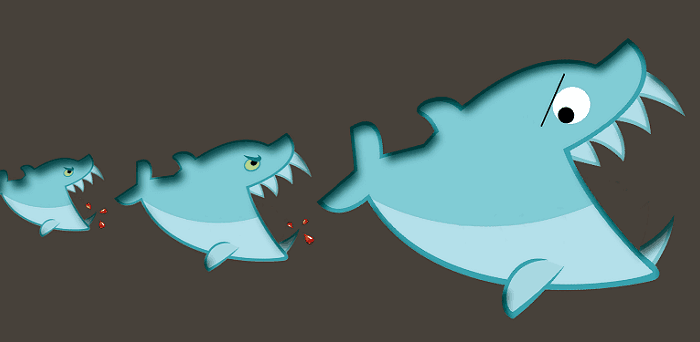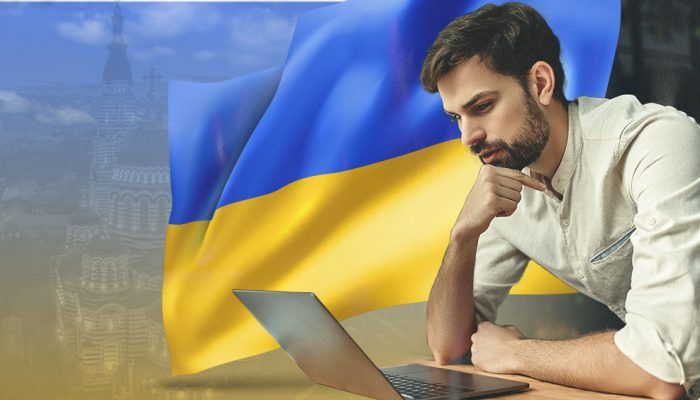Build Your Imagination Bridge – Seven Steps to Re-“Vision” Your Brand
On February 14th I published a book called the Imagination Playbook for people, brands, issues and organizations. Little did I know then that just a month later, we’d be in the middle of a global pandemic that would change almost everything. For the last few months, out of shock, a bit of depression and the all-consuming pursuit of disinfectant and toilet tissue, I put my own imagination on pause. Well, truth be told, imagination can go two ways. A vivid imagination can take you to some pretty dark places. You can imagine worst case scenarios (death, destruction, economic disaster and the like) and see an unseen and clever little virus chasing you around every corner.
That same imagination can make you question everything you ever believed or held as an unmovable truth. If all the things that fueled your imagination are gone (temporarily we hope), what’s a normally optimistic and imaginative dreamer to do? In more “ordinary” times, my personal imagination was fueled by travel, live theatre, amazing conversations at fun restaurants, gatherings with friends, trips to art galleries and museums. Poof! Just like that, those imagination stimulators disappeared. More daunting — loss of jobs, a plummeting stock market, illness, taking care of children or elders 24/7 could cloud anyone’s imagination.
So, what’s a person, brand, issue or organization to do? I can only tell you what I decided to do.
Find new inspiration and begin to build a bridge from what’s now to what’s next. I want to use this time to re-evaluate what’s both essential to and fulfilling for a good life, a good brand and a good society. I’d like to revisit the essence of imagination and find new ways to think, new tools to use and new partners to collaborate with. Let’s use this time of enforced solitude to look inward so that when we come out of all of this, something more meaningful, equitable, beautiful and truly essential and fulfilling will be possible. As Einstein said, “ Imagination is more important that knowledge. For knowledge is limited, whereas imagination embraces the entire world. Stimulating progress, giving birth to evolution.” As I say in my book, would you argue with Einstein? Let’s get started.
Seven Steps to Get Across
Here are seven steps to help you cross that imagination bridge and tear down that wall of fear and indecision. Begin with the classic three essential pillars of brand-building – Vision, Mission and Values:
1. Re-“vision”: It’s time to completely review and rethink your brand’s vision – your raison d’etre and your true purpose or passion. Does it still hold up? Is there real substance behind it? Does it have fluidity* – the capacity to reflect change, be inventive, embrace new realities and course correct when necessary? Is it too safe? Is your vision uniquely purposeful and truly visionary? This goes for personal branding, entrepreneurial endeavors as well as traditional brands. Is your “brand” navigating your stakeholders to a place they actually still want to go? Is your brand vision authoritarian or democratic? Does it provide room for experimentation and collaboration? Can it stand up to transparency and criticism? Is it willing to reveal its flaws and confess its mistakes? A. colleague of mine challenged me on the notion of a brand vision being more fluid. He said a brand’s vision should not change. I couldn’t disagree more. If we look at the travel and fashion industries in particular, what is the vision for travel brands when one can no longer travel in the traditional sense? Why aren’t more travel brands creating a bridge or a figurative rocket ship to help take people to far-away places without leaving their homes? This is the time for the travel industry to be more visionary about keeping our love for travel alive until it’s safe and prudent to get out there again. In fashion, what is the vision for brands in that industry, when even if you had the right clothes, what’s the use of getting dressed up with nowhere to go? Anna Wintour, the editor of Vogue recently stated: “I think everybody is rethinking what the fashion industry stands for, what it means, what it should be.” This will take imagination.
2. Make your Mission Essential, Economical and Magical: In a transitional time, what you “do” (your mission which includes the products and services you provide but also your value-added initiatives) also needs a re-think. Ford motor company turns their natural “engine-nuity” into ingenuity by repurposing their production line to make respirators. French perfume giant LHMV utilizing their perfume and cosmetic factories to produce hand sanitizer for hospitals and their essential workers. This is the right time to consider if what your brand is actually doing or producing is mission essential. Not every brand could or should follow Ford or LHMV’s example. Ask yourself, what is your brand authentically built to do in order to serve essential needs. And have brands forgotten the forgotten – those essential workers — supermarket cashiers, delivery people, short order cooks, sanitation workers, train conductors and bus drivers, migrant workers, nurses, hospital staff, some of their own employees, and more? In an instant we have elevated the contribution and the plight of those who are truly essential. Let’s hope we as brands, citizens and governments actually “do” something for those who are now considered essential. Think about their economic needs as well as your own. Make the magic they do part of your brand’s activations. Finally, examine what kind of magic you are putting into the world. Does it inspire, make employees and customers feel good, healthy, honored and included? Think about endeavors and experiments vs. campaigns and content. Do something vs. say something. Build a bridge between cultures, borders, silos, partisans, friends and enemies alike. Accept that the doing isn’t one thing, but many experiments (successful and failed) that move us ahead.
3. Add the values that should now be common to all brands: Empathy, kindness, humanity, collaboration and humor. These values have been missing for many of us, especially in the United States. Every brand and every person have a responsibility to embrace these values and pay them forward.
4. Embrace the benefits and realities of global connectivity and citizenship: If the pandemic has taught us one thing it is that for better or worse, we are all connected globally. Unfortunately, the negative view of globalization has made many shy away from the need for global citizenship. We live in a world where despite the rise of nationalism, we are dependent on a global economy, need a global health brain trust and all share the consequences of global warming. In addition, a global citizenship mentality leads to a greater appreciation for diversity of culture and humanity. Imagine how brands and governments could flourish with a new global mindset.
5. Be promiscuous (yes you read that correctly) and discover the advantages of hooking up with strange bedfellows: Who you step onto the bridge with, matters. Choose partners who you might not have things in common with and who challenge you. Move out of your comfort zone. Explore co-creation with other brands in other categories. Mix it up. Combine things that would never go together. Look at what it did for peanut butter and chocolate, fashion and technology, Broadway and Rap, Martha Stewart and Snoop Dog, mobile phones and everything. Just recently, United Airlines joined forces with Clorox and the Cleveland Clinic to make air travel healthier and safer during this pandemic. What new partners could you collaborate with?
6. “Give people what they don’t know they want yet:” This is one of my favorite quotes from former editor-in-chief of Vogue magazine, Diana Vreeland. Steve Jobs had his own version of a similar sentiment. It provokes us to anticipate the future, not rely too much on focus groups where we learn what people want now, not necessarily what they want next. It challenges us to be hypothetical and travel to the “what if” zone, motivating us to be curious and connect dots in a different way. It’s that place on the imagination bridge where we find that tipping point trend and discover an unmet need or desire.
7. Create a fluidity plan instead of a game plan: Before Corona (B.C.), too many of us were on a treadmill lurching forward with little time to reflect and stand still. We all had a game plan and most of that plan had to do with bigger, better, and faster. It’s time to change our game plans and reconsider what’s important. Find what’s better rather than what’s bigger. Game plans are usually finite, have an end goal and are played for the short-term win. Often these plans are evaluated quarter to quarter and sacrifice longevity and vision. Game plans are designed to thrive in the moment but not for the long haul. And game plans don’t often anticipate or plan for the future. Consider instead a Fluidity Plan that lives on a curve, anticipates the ups and downs, invites experimentation and navigates change as inevitable and positive. A fluidity plan helps you or your brand thrive on the current and surf on the wave of the what’s coming next. And it takes real account of the first six steps above to get you across your Imagination bridge.
This current pandemic can either make us all more risk adverse or more adventurous with our innovation and creativity. We probably can’t go back, so let’s jump ahead and look forward to a new view from the bridge. Use this time wisely. Stimulate imagination. Take risks. Think big again. Find your imagination architect or empower an Imagination dream team. Build your imagination bridge and see where it takes you.
To discover more, read the Imagination Playbook and feel free to contact me at Imagination.Playbook@gmail.com. Perhaps we can build your imagination bridge together.
*Fluidity is a primary characteristic of the world in which we live and operate. It is characterized by the undermining, deterioration – and even ultimate collapse – of traditional norms, structures and processes. And it challenges organizations, brands people to apply fluidity to their thinking and their actions. This is a concept developed by Fluid, a global Collective of independent senior consultants from around the world. We come together on a project basis to solve communications-intensive brand and business issues.


